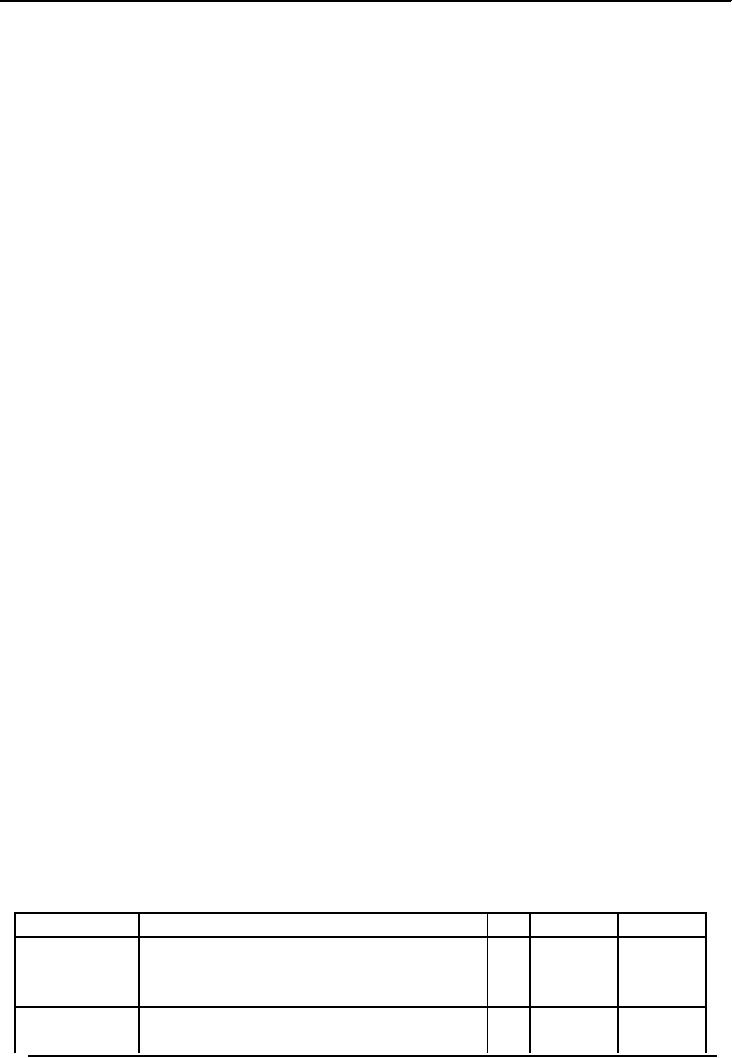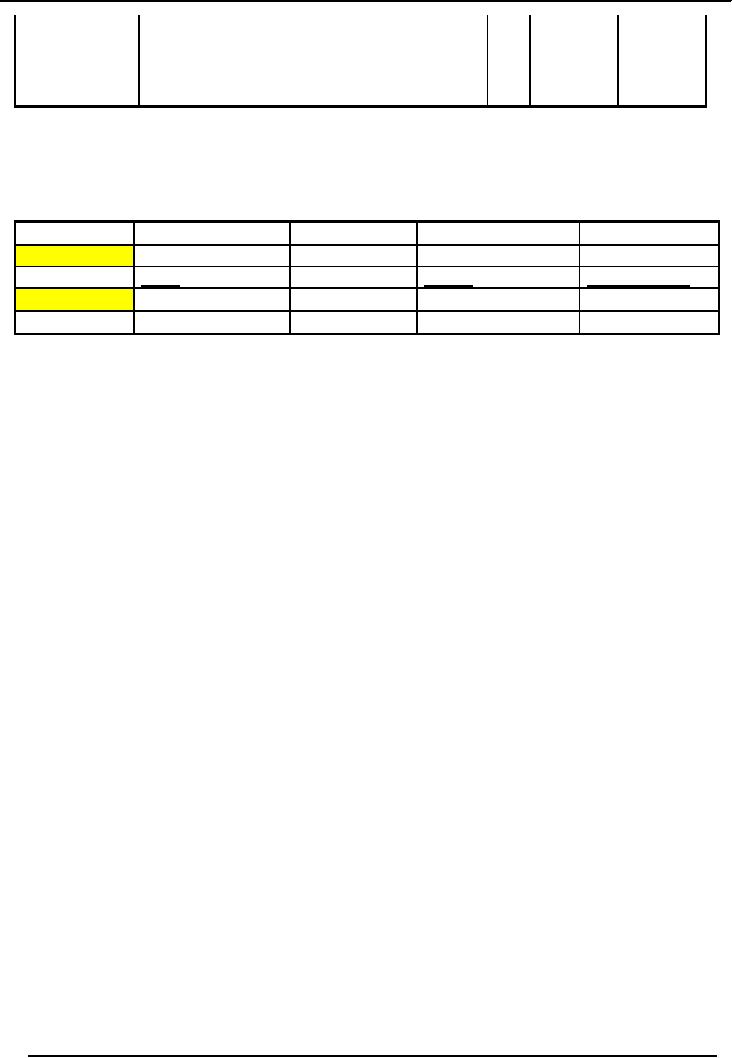 |
Dual Aspect of Transactions |
| << ACCOUNTING & ACCOUNTING PRINCIPLES |
| Rules of Debit and Credit >> |

Financial
Statement Analysis-FIN621
VU
Lesson-2
ACCOUNT
AND ACCOUNTING
CYCLE/PROCESS
Account
An
accounting system keeps
separate record of each item
like assets, liabilities,
etc. For example, a
separate
record is kept for cash that
shows increase and decrease in
it.
This
record that summarizes movement in an
individual item is called an
Account.
Each
element/sub-element of the balance sheet is
named as "Account",
having
three parts
viz
title, left side (Debit or
Dr) and a right side
(Credit or Cr). Technically,
these are also called
`Ledger
Accounts'.
The same is true of Income
Statement, which would be discussed
later.
The
Ledger Accounts are also
called T-account, because
these are in the shape of the
alphabet `T' as
shown
below:-
Dr
Title
Cr
!
!
!
!
!
Account
Payable:An amount
owed to a supplier for good
or services purchased on credit;
payment is
due
within a short time period,
usually 30 days or
less.
Notes
Payable: A
liability expressed by a written promise
to make a future payment at a
specific time,
OR
are obligations (short term debt)
evidenced by a promissory note? The
proceeds of the note are
used
to
purchase current assets
(inventory & receivables).
Dual
Aspect of Transactions
For
every debit there is an equal
credit. This is also called
the dual
aspect of the transaction
i.e.
every
transaction
has two aspects, debit and
credit and they are always
equal. This means that
every
transaction
should have two-sided effect.
For example Mr. A starts his
business and he initially invests
Rupees
100,000/- in cash for his
business. Out of this cash
following items are purchased in
cash;
A
building for Rupees
50,000/-;
o
Furniture
for Rupees 10,000/-;
and
o
A
vehicle for Rupees
15,000/-
o
This
means that he has spent a
total of Rupees 75,000/- and
has left with Rupees
25,000 cash. We will
apply
the Dual Aspect Concept on these
events from the viewpoint of
business.
When
Mr. A invested Rupees 100,000/-, the
cash account benefited from
him. The event will
be
recorded in the
books of business as,
Debit
Cash
Rs.100,
000
Credit
Mr.
A
Rs.100,
000
Analyse
the transaction. The account that
received the benefit, in this
case is the cash account,
and the
account that provided the
benefit is that of Mr. A.
Building
purchased The building
account benefited from cash
account
�
Debit
Building
Rs.50,
000
Credit
Cash
Rs.50,
000
6

Financial
Statement Analysis-FIN621
VU
�
Furniture
purchased The furniture
account benefited from cash
account
Debit
Furniture
Rs.10,
000
Credit
Cash
Rs.10,
000
�
Vehicle
purchased The vehicle
account benefited from cash
account
Debit
Vehicle
Rs.15,
000
Credit
Cash
Rs.15,
000
Basic
Principle of Double
Entry
We
can devise the basic principle of
double entry book-keeping
from our discussion to this
point "Every
Debit
has a Credit" which means
that "All Debits are always
equal to All Credits".
Assets
Assets
are the properties
and possessions of the
business.
Properties
and possessions can be of
two types:
o Tangible
Assets that
have physical existence ( are further
divided into Fixed Assets
and
Current
Assets)
o Intangible
Assets that
have no physical existence
Examples of
both are as follows:
o Tangible
Assets Furniture, Vehicle
etc.
o Intangible
Assets Right to receive
money, Good will
etc.
Accounting
Equation
From
the above example, if the debits and credits
are added up, the situation
will be as follows:
Debits
Cash
Rs.100,
000/-
Building
50,000/-
Furniture
10,000/-
Vehicle
15,000/-
Credits
Mr.
A
Rs.100,
000/-
Cash
75,000/-
The
total Equation
becomes:
�
DEBITS
=
CREDITS
Cash
+ Building + Furniture +
Vehicle
=
Cash
+ Mr. A
100000
+ 50000 + 10000
+
15000
=
75000
+ 75000
Cash
on Left Hand Side is Rupees
100,000/- and on Right Hand Side it is
Rs.75, 000/-. If it is gathered
on the
Left Hand Side it will
give a positive figure of
Rupees 25,000/- (which you
will notice is our
balance
of cash in hand). Now the
equation becomes:
7

Financial
Statement Analysis-FIN621
VU
DEBITS
=
CREDITS
Cash
+ Building
+
Furniture+ Vehicle
=
Mr.
A
25,000+
50,000 + 10,000 +
15,000
=
100,000
Keeping
the entity concept in mind we
can see that the business
owns the building, furniture,
vehicle
and
cash and will obtain benefit
from these things in future.
Any thing that provides
benefit to the
business
in future is called `Asset'.
Similarly the business had obtained the
money from Mr. A and
this
money
will have to be returned in form of
either cash or benefits. Any
thing for which the business
has
to
repay in any form is called
`Liability'. So
cash, building, furniture
and vehicle are the assets
of the
business
and the amount received from Mr. A for
which the business will have to
provide a return or
benefit
is the liability of the business.
Therefore, our equation
becomes:
Assets
=
Liabilities
The
liabilities of the business can be
classified into two major
classes i.e. the amounts
payable to
`outsiders'
and those payable to the
`owners'. The liability of the
business towards its owners is
called
`Capital'
and amount
payable to outsiders is called liability.
Therefore,
our accounting equation
finally
becomes:
Assets
=
Capital
+
Liabilities
Business
or Commercial Accounts are
based upon Double entry
accounting involving Debit
and
credit
entries. Rule for Dr. & Cr entries to
record changes in balance sheet
Accounts or Accounting
Equation
is: increase in assets are
debited (since Assets are on
left side of Accounting
Equation) and
increase
in liabilities and Owner's Equity
are credited because these
are on the right side of
Accounting
Equation.
Correspondingly, decrease in Assets is
credited and decrease in
liabilities and Owners
Equity
are
debited.
Dr+
↑
Assets
= Liabilities + Owner's
equity
Cr↓_
Cr ↑ + ↓ _ Dr ↑+Cr
↓_
Dr.
Rule
for Income Statement items is
that Revenues are credited
and expenses are
debited.
The basis of this rule is
that income statement shows
the effect of Revenues & Expenses
on
owner's
equity. Difference of Revenues and
Expenses causes difference in
owner's equity. Since
Revenues
increase owner's equity,
these are credited.
Correspondingly, since expenses
ultimately
reduce
owner's equity, these are
debited.
It
would thus be seen that
normal balances in Assets
Accounts would be debit and
those in
Liability
and Owner's Equity Accounts
would be credit. Orderly arrangement of
Accounts is to be
maintained.
Numbering of Accounts is also done to
facilitate proper record-keeping
and cross-
references.
When the business is large, a
Chart of Accounts is maintained
which lists the
various
Accounts
giving details of their
titles and numbers.
Compound
Entry. A
journal entry that has more
than one debit or credit
entry.
General
Journal
Date
Account
Title and explanation
LP
Dr.
Cr.
Cash
1
180,000
Khizr,
Capital
50
180,000
July,
2006 (1)
(Owner
invested cash in
business)
July,
2006 (5)
Building
36,000
Cash
15,000
8

Financial
Statement Analysis-FIN621
VU
Accounts
payable
21,000
(Purchase
building partly for cash
and
Partly
on credit)
"LP"
is reference account No: of the
particular ledger accounts.
For example cash account
has been
assigned
number 1 in ledger and capital account is
given number 50.
C)
Posting in
ledger which mean
transferring debits and credits from
journal to ledger account. This
is
also
called ledgerising or
classification
Date
Explanation
Ref
Dr.
Cr.
Jul
1
1
180,000
Khizr
1
Capital
Account
No:50
Jul
1
180,000
"Ref"
is reference to the page of journal i.e.
page 1. This shows that
there is cross-reference between
journal
and ledger through "LP" and
"ref" columns in journal and ledger
respectively.
9
Table of Contents:
- ACCOUNTING & ACCOUNTING PRINCIPLES
- Dual Aspect of Transactions
- Rules of Debit and Credit
- Steps in Accounting Cycle
- Preparing Balance Sheet from Trial Balance
- Business transactions
- Adjusting Entry to record Expenses on Fixed Assets
- Preparing Financial Statements
- Closing entries in Accounting Cycle
- Income Statement
- Balance Sheet
- Cash Flow Statement
- Preparing Cash Flows
- Additional Information (AI)
- Cash flow from Operating Activities
- Operating Activities’ portion of cash flow statement
- Cash flow from financing Activities
- Notes to Financial Statements
- Charging Costs of Inventory to Income Statement
- First-in-First - out (FIFO), Last-in-First-Out (LIFO)
- Depreciation Accounting Policies
- Accelerated-Depreciation method
- Auditor’s Report, Opinion, Certificate
- Management Discussion & Analyses (MD&A)
- TYPES OF BUSINESS ORGANIZATIONS
- Incorporation of business
- Authorized Share Capital, Issued Share Capital
- Book Values of equity, share
- SUMMARY
- SUMMARY
- Analysis of income statement and balance sheet:
- COMMON –SIZE AND INDEX ANALYSIS
- ANALYSIS BY RATIOS
- ACTIVITY RATIOS
- Liquidity of Receivables
- LEVERAGE, DEBT RATIOS
- PROFITABILITY RATIOS
- Analysis by Preferred Stockholders
- Efficiency of operating cycle, process
- STOCKHOLDERS’ EQUITY SECTION OF THE BALANCE SHEET 1
- STOCKHOLDERS’ EQUITY SECTION OF THE BALANCE SHEET 2
- BALANCE SHEET AND INCOME STATEMENT RATIOS
- Financial Consultation Case Study
- ANALYSIS OF BALANCE SHEET & INCOME STATEMENT
- SUMMARY OF FINDGINS